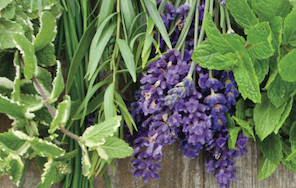To misquote Jane Austen completely: “It is a truth – not, I think, universally acknowledged – that a single man in possession of a good fortune and after an excellent meal must be in want of herbal bitters to aid the digestion.” Although it’s hard to imagine any of Ms Austen’s heroes, let alone her heroines, swigging back (and surviving) a swift jigger of bitters after dinner, it’s interesting to note that when she herself was 18 years old the now Czech Republic brand Becherovka was no longer just a twinkle in its founder Joseph Becher’s eye.
He was an apothecary and that is not at all surprising as most of these “herbal delights” started life as medicinal tinctures – hence their status as a digestif which, in part, remains their prowess today, although by necessity there have been changes along the way.
The key challenge for herbal bitter liqueurs today is to attract the all important ‘youth’ market as traditional consumers are not getting any younger. Indeed, it’s the old marketing chestnut – how to attract the young without offending the traditional consumer.
Some brands have risen to this challenge remarkably successfully, perhaps most notably Germany’s Jägermeister, which is head and shoulders the leader of the pack.
As a brand it is an absolute powerhouse, particularly in the US where the judicious use of the Jägermeister tap machine, which freezes the liqueur, has aided and abetted the brand’s progress predominantly among the vast student population.
It is now available in some 90 markets and exports account for 80% of the brand’s volume. Last year was yet another record and saw Jägermeister ranked 24th in Drinks International’s Brands By Value league 2013. With annual volume now nudging the 7 million case mark – and a growth of 3% (Drinks International’s The Millionaire’s Club), Jägermeister is in robust health – and that in spite of the economic climate in the eurozone and continuing difficulties Stateside, its number one market.
The company cites the UK – where sales topped 7 million bottles for the first time – Spain, Russia and the Czech Republic as particular bright spots. Also Brazil, South Africa and South Korea reported ‘outstanding growth’. Indeed, South Korea turned in a three and a half-fold increase in volume compared with 2011, making Jägermeister ‘a clear sales driver in Asia’.
Down Under last year was something of a watershed for Jagermeister in that the company introduced its first line extensions with two flavoured RTDs: Raw, a strong blend of Jägermeister, guarana extract and other 100% natural ingredients, and Ginger Lime, in both New Zealand and Australia. Interestingly the company has changed distributors in Australia, moving the brand from Suntory, where it has been for 10 years and grown from nothing into a 100,000 case phenomenon, into the Brown-Forman stable.




